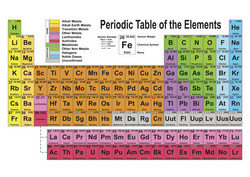Critical raw materials: the search for a substitute in catalysis, electronics and photonics
‘Critical raw materials’ are crucial to many European industries but they are vulnerable to scarcity and supply disruption. As such, it is vital that Europe develops strategies for meeting the demand for raw materials. One such strategy is finding methods or substances that can replace the raw materials that we currently use. With this in mind, four EU projects working on substitution in catalysis, electronics and photonics presented their work at the Third Innovation Network Workshop on substitution of Critical Raw Materials hosted by the CRM_INNONET project in Brussels earlier this month. NOVACAM NOVACAM, a coordinated Japan-EU project, aims to develop catalysts using non-critical elements designed to unlock the potential of biomass into a viable energy and chemical feedstock source. The project is using a ‘catalyst by design’ approach for the development of next generation catalysts (nanoscale inorganic catalysts), as NOVACAM project coordinator Prof. Emiel Hensen from Eindhoven University of Technology in the Netherlands explained. Launched in September 2013, the project is developing catalysts which incorporate non-critical metals to catalyse the conversion of lignocellulose into industrial chemical feedstocks and bio-fuels. The first part of the project has been to develop the principle chemistry while the second part is to demonstrate proof of process. Prof. Hensen predicts that perhaps only two of three concepts will survive to this phase. The project has already made significant progress in glucose and ethanol conversion, according to Prof. Hensen, and has produced some important scientific publications. The consortium is working with and industrial advisory board comprising Shell in the EU and Nippon Shokubai in Japan. FREECATS The FREECATS project, presented by project coordinator Prof. Magnus Rønning from the Norwegian University of Science and Technology, has been working over the past three years to develop new metal-free catalysts. These would be either in the form of bulk nanomaterials or in hierarchically organised structures – both of which would be capable of replacing traditional noble metal-based catalysts in catalytic transformations of strategic importance. Prof. Magnus Rønning explained that the application of the new materials could eliminate the need for the use for platinum group metals (PGM) and rare earth metals – in both cases Europe is very reliant on other countries for these materials. Over the course of its research, FREECATS targeted three areas in particular – fuel cells, the production of light olefins and water and wastewater purification. By working to replace the platinum in fuel cells, the project is supporting the EU’s aim of replacing the internal combustion engine by 2050. However, as Prof. Rønning noted, while platinum has been optimized for use over several decades, the materials FREECATS are using are new and thus come with their new challenges which the project is addressing. HARFIR Prof. Atsufumi Hirohata of the University of York in the United Kingdom, project coordinator of HARFIR, described how the project aims to discover an antiferromagnetic alloy that does not contain the rare metal Iridium. Iridium is becoming more and more widely used in numerous spin electronic storage devices, including read heads in hard disk drives. The world supply depends on Platinum ore that comes mainly from South Africa. The situation is much worse than for other rare earth elements as the price has been shooting up over recent years, according to Prof. Hirohata. The HARFIR team, divided between Europe and Japan, aims to replace Iridium alloys with Heusler alloys. The EU team, led by Prof. Hirohata, has been working on the preparation of polycrystalline and epitaxial thin films of Heusler Alloys, with the material design led by theoretical calculations. The Japanese team, led by Prof. Koki Takanashi at Tohoku University, is meanwhile working on the preparation of epitaxial thin films, measurements of fundamental properties and structural/magnetic characterisation by neutron and synchrotron x-ray beams. One of the biggest challenges has been that Heusler alloys have a relatively complicated atomic structure. In terms of HARFIR’s work, if any atomic disordering at the edge of nanopillar devices, the magnetic properties that are needed are lost. The team is exploring solutions to this challenge. IRENA Prof. of Esko Kauppinen Aalto University in Finland closed off the first session of the morning with his presentation of the IRENA project. Launched in September 2013, the project will run until mid 2017 working towards the aim of developing high performance materials, specifically metallic and semiconducting single-walled carbon nanotube (SWCNT) thin films to completely eliminate the use of the critical metals in electron devices. The ultimate aim is to replace Indium in transparent conducting films, and Indium and Gallium as a semiconductor in thin film field effect transistors (TFTs). The IRENA team is developing an alternative that is flexible, transparent and stretchable so that it can meet the demands of the electronics of the future – including the possibility to print electronics. IRENA involves three partners from Europe and three from Japan. The team has expertise in nanotube synthesis, thin film manufacturing and flexible device manufacturing, modelling of nanotube growth and thin film charge transport processes, and the project has benefitted from exchanges of team members between institutions. One of the key achievements so far is that the project has succeeded in using a nanotube thin film for the first time as the both the electrode and hole blocking layer in an organic solar cell. - Networking and innovation for the substitution of critical raw materials
Countries
Finland, Netherlands, Norway, United Kingdom



